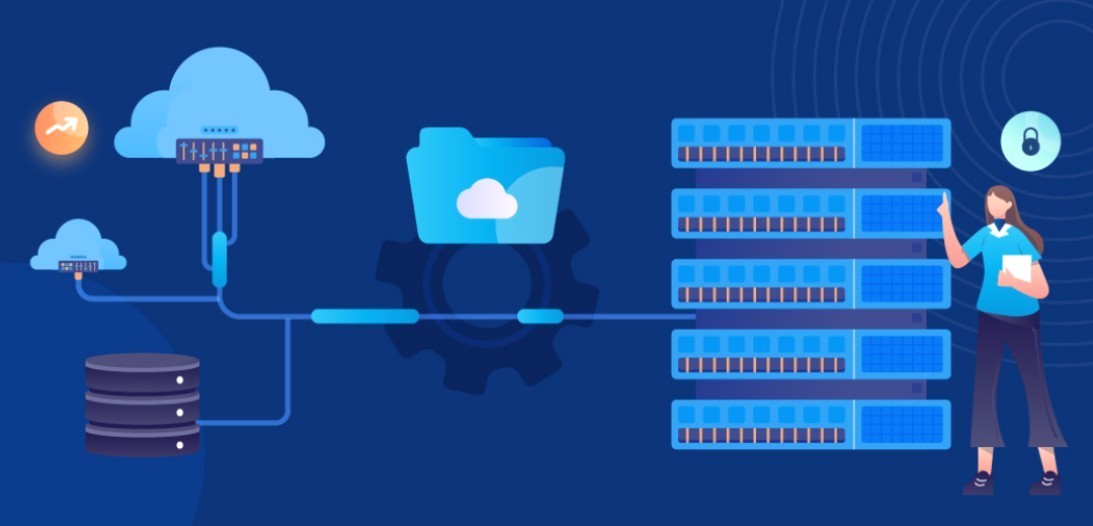The author is a CEO and Co-Founder in Eucloid. For any queries, reach out to us at: contact@eucloid.com
Making Sense of Your Data with a Modern Data Stack Platform

They say data is the new oil, and it's no surprise why. Conversations around data have taken the corporate world by storm, and businesses of all sizes are eager to make the most out of their customer data. The way companies interact with their customers, analyze customer behavior, and build better products is being revolutionized with the explosion of data in recent years. But across the business spectrum, the challenge remains: how can businesses best utilize their data to make informed decisions and provide an optimal customer experience?
Smaller off the shelf solutions may be a good starting point for understanding business data. But as businesses scale up significantly, they'll most likely need to go beyond that and find more sophisticated solutions. In the midst of such uncertainties, it is the modern data stack that comes to the rescue.
So what exactly are data stacks?
Data stacks are the engine of the modern business world. These collection of data focused tools and technologies help businesses make sense of all the customer data they have, so that businesses can understand their customers better and gain an edge over their competitors. As the space evolves, we are also moving from traditional to modern data stacks.
The key difference between Traditional and Modern data stacks
The traditional data stack was like a jumbled mess of tangled wires, all interconnected in ways that were difficult to decipher. It was not only challenging to create, but was also slow to respond to new information, requiring highly specialized experts to make sense of the data.
On the other hand, the modern data stack is easier to implement and allows for greater flexibility by providing plug-and-play options instead of long-term commitments. Additionally, it enables more teams to make use of the data they have available and take on its associated responsibilities.
What are the components of modern data stack?
A modern data stack typically consists of the following components:
- Data integration: Data integration collates individual pieces of information from a wide array of sources and brings them together into one harmonious data warehouse. It acts as a magical bridge between different data sources through which businesses can have a single source of truth and get an integrated view of their consumers. Hevo, Fivetran, and Stitch are some tools in this category.
- Data transformation: While transferring a document from one source to another, it is often necessary to change its format and clean up for any inconsistencies. For instance, a document in Excel format may need to be converted into a form that's compatible with the destination. This is when data transformation comes to play.
- Data warehouse: Unlike traditional databases, a data warehouse is a giant storage unit that can handle huge amounts of information more efficiently. It's like a big, virtual closet where all the data from different sources is collected and neatly stored away. This allows companies to find all their data in one place instead of searching through a bunch of places. Snowflake, BigQuery, Databricks and Redshift are a few popular tools that help companies build their data warehouses.
- Business intelligence: Business intelligence is all about integrating business analytics, data mining, and data visualization for improved decision-making. These processes can provide companies with a clear picture of what's going on. Be it reducing inefficiencies or managing supply variations - business intelligence can indeed help companies stay ahead of the game.
- Data governance: Data Governance is the guardian of corporate data, helping businesses store their information in a secure environment. Data catalogs and data privacy tools ensure that all accumulated information is reliable and safe from outside threats. For companies looking for a reliable way to store their sensitive data assets, data governance is key.
Latest trends shaping the modern data stack
For many years, organizations have aspired to become data-driven. This need for innovation has resulted in the emergence of new trends that are shaping the modern data stack.
- Data democratization: The digital revolution has made data the new king of the business world. However, with growing digitalisation, it has become imperative for organizations to democratize data and make it available to all members. Data democratization empowers everyone in the organization to get access to key data metrics and convert them into actionable insights.
- No-code platforms: For those who don't know how to code, no-code data platforms offer the ultimate shortcut to work with and manipulate data. By using graphical user interfaces, templates, logical sequences and drag-and-drop options, users can easily ingest data, transform it in various ways, analyze it and perform machine learning without having to learn any coding skills. This technology is making data more accessible than ever before by democratizing access for all types of users.
- Augmented analytics: With machine learning and artificial intelligence at its disposal, Augmented Analytics can help even those without technical skills get the most out of their data. Gartner defines it as a technology that enhances how people interact with their data in BI platforms. Analysts can control a larger portion of the data value chain with these cloud based solutions and increase their impact on businesses. They automate much of the work that goes into preparing, analyzing and sharing findings and focus more on interpreting insights and recommendations.
- Data mesh: Imagine having to transport data from different locations and sources to a central data lake for analytics. This process can indeed take up a lot of time and money! Thanks to data mesh- it helps solve the challenge by decentralizing the ownership model of each business unit, allowing them to access and analyze their own “non-core” data, quickly and easily without having to transfer it elsewhere. While traditional methods of data management require the intervention of expert data teams, data mesh decentralizes ownership to domain-specific teams that manage and serve the data like a product. This allows users from all levels to access, analyze and operationalize insights from any source without having to wait for transportation. This significantly reduces the amount of time needed for insights or value generation. Moreover, data mesh makes data more secure and interoperable, resulting in faster time to value.
- Reverse ETL: ETL (Extract-Transform-Load) in reverse? That's right- with this technology, businesses can take all that cleaned-up data from the warehouse and put it back into applications like Salesforce. It enables companies to "operationalize" the same data that powers reports in a BI tool by sending it out into operational business tools, doing the reverse of what ETL does (ingesting data into the warehouse). This allows for a new approach known as operational analytics, where insights from data teams are fed to business teams in their usual workflow and they can make more informed decisions. Reverse ETL is a great way to break down those pesky data silos in your warehouse and get your transformed data out into the world.
Today, more and more organizations are recognizing that their traditional data stacks are no longer adequate for dealing with the complexity of the insane amount of data. By implementing a modern data stack, organizations can save time and money while creating valuable business solutions based on actionable data. However, it's important not to rush into a modernization project without proper planning - designing an effective user experience should be the priority in order to benefit from this new technology.
At Eucloid, we understand that it's necessary for businesses to harness the power of the modern data stack. With tailored solutions for Fortune 500 companies - our system uses messaging platforms, stream processing and online analytical processing (OLAP) technologies that help businesses across sectors gain insights into their customer behavior, and market trends, among many others.
Looking to know more? Reach out at Contact@eucloid.com
Posted on : January 16, 2023
Category : Data Engineering
About the Authors
